|
|
Post by Bonobo on Jan 11, 2009 14:38:08 GMT 1
This thread is about Polish traitors. Who are Polish heroes? Guys who fought for the Polish cause. Who are Polish traitors? Guys who betrayed the Polish cause. Who shall go first? In my opinion, the makers and supporters of Targowica Confederacy in 18 century. In 1791 Poles concocted the first constitution in Europe, second in the world after the American one. hc.rediris.es/01/Constituciones/cp1791.htmThe May 3rd, 1791 Constitution was the first liberal constitution in Europe and second in the world, after the Constitution of the United States. The Polish Constitution was deemed too dangerous by the tyranny of absolutism still rampant in Europe. Thus Russia, Prussia and Austria decided to wipe out "the Polish cancer of freedom" from the face of the earth. In 1795 partitioned Poland ceased to exist as a state and in terms of national life, she lost the entire 19th Century, being reborn in 1918 at the conclusion of WWI. The Declaration of the Constitution, a famous painting by Jan Matejko.  In short: The Constitution was abolished by Russia and Prussia together with Polish aristocrats (Targowica members, commonly considered traitors in Polish historical memory) who opposed any reforms and the second partition took place in 1793. It was a catastrophy for the state, that`s why an insurection broke out led by T. Kosciuszko. During the insurection the riots took place in Warsaw and angry mob dragged imprisoned Targowica traitors to the market square where they were hanged.   Those who had escaped imprisonment, were hanged in effigy.  |
|
tomek
Nursery kid
 
Posts: 256 
|
Post by tomek on Jan 11, 2009 23:11:46 GMT 1
During the insurection the riots took place in Warsaw and angry mob dragged imprisoned Targowica traitors to the market square where they were hanged.  Traitors finish so that it is good because maybe more traitors will not come out? |
|
|
|
Post by Bonobo on Dec 28, 2009 0:28:34 GMT 1
More en.wikipedia.org/wiki/Targowica_Confederation
The Targowica Confederation was a confederation established by Polish and Lithuanian magnates on 27 April 1792, in Saint Petersburg, with the backing of the Russian Empress Catherine II. The confederation opposed the Polish Constitution of May 3, 1791, which had been adopted by the Great Sejm, especially the provisions limiting the privileges of the nobility. The text of founding act of the confederation was written by the Russian general Vasili Stepanovich Popov. Four days later two Russian armies invaded the Polish-Lithuanian Commonwealth without a formal declaration of war.
The forces of the Targowica Confederation defeated the forces loyal to the Polish-Lithuanian Commonwealth, the Sejm and King Stanisław August Poniatowski in the Polish–Russian War of 1792. Their victory precipitated the Second Partition of Poland and set the stage for the Third Partition and the final dissolution of the Commonwealth in 1795.
The nickname "targowiczanin", describing the supporter of this confederation, became a negative political epithet in Poland, akin to "foolish traitor", still used up to the modern dayWhat happened to Targowica noble members? Some were hanged be revolted masses: Szymon Marcin Kossakowski - A supporter of the Russian Empire during the Kościuszko Uprising and earlier, he was deemed a traitor. In the aftermath of the Wilno Uprising he tried to escape by boat, but was captured and hanged in the town hall square of Vilnius with the inscription of He who swings will not drown[1] and was interred in the cellars of the church in Jonava.
en.wikipedia.org/wiki/Szymon_Kossakowski Some escaped and were hanged in effigy: Count Stanisław Szczęsny Potocki -Marshal of the Confederation. Sentenced to death, but never apprehended. Instead, on September 29, 1794, his portrait was hanged. In 1795 he was rewarded by Catherine the Great with the Russian Order of Alexander Nevsky and the rank of general en chef. en.wikipedia.org/wiki/Stanis%C5%82aw_Szcz%C4%99sny_Potocki en.wikipedia.org/wiki/Stanis%C5%82aw_Szcz%C4%99sny_PotockiTwo quotes from him: After the signing of the Targowica Confederation:"Each true Pole, not blinded by the Prussian and royalist cabal, is convinced, that our Fatherland can only be saved by Russia, otherwise our nation will be enslaved".
"About past Poland and Poles . Gone is this country, and this name, as many others have perished in the world's history. I am now a Russian forever." |
|
|
|
Post by Bonobo on Dec 30, 2009 11:07:54 GMT 1
Traitor Iwo Sym was a known actor before WW2. When Germans occupied Poland, he openly cooperated with them. For that he was killed by the Polish underground.  en.wikipedia.org/wiki/Igo_SymAfter September 1, 1939, Sym stayed in Warsaw. Known before the war for his pro-German stance, the actor signed the Volksliste, as a Volksdeutscher. Due to his widespread fame, the Germans regarded him a crucial element of legitimization of the new authorities. So, the propaganda department of the General Government gave him the post of the director of German “Theater der Stadt Warschau”. Sym was the director of the “Nur Fur Deutsche” (“Only for Germans”) cinema, “Palladium”, and owner of “Teatr Komedia”. en.wikipedia.org/wiki/Igo_SymAfter September 1, 1939, Sym stayed in Warsaw. Known before the war for his pro-German stance, the actor signed the Volksliste, as a Volksdeutscher. Due to his widespread fame, the Germans regarded him a crucial element of legitimization of the new authorities. So, the propaganda department of the General Government gave him the post of the director of German “Theater der Stadt Warschau”. Sym was the director of the “Nur Fur Deutsche” (“Only for Germans”) cinema, “Palladium”, and owner of “Teatr Komedia”.
Some time in late 1939, Sym became a Gestapo agent. Also, according to the preserved documents, the actor had been cooperating with Berlin before September 1, 1939. At the beginning of the war he helped to organize a trap, in which Hanna Ordonówna was caught (Ordonówna had been Sym's pre-war partner on the screen and his friend from Warsaw's theaters). Polish resistance quickly found out about this, and a group of agents, led by “Teatr Komedia” actor Roman Niewiarowicz, started to trace his activities.
On October 10, 1941 in Berlin's Ufa-Palast theatre, the film Heimkehr debuted. The film, Nazi propaganda, told the story about pre-1939 German minority in Polish Volhynia. The Germans, presented as noble, peace-loving people, were brutally persecuted by vicious Poles. In the final scene, Polish soldiers lead arrested Germans to an execution, however German airplanes and tanks appear, saving the whole community. Igo Sym did not play in this film, but he actively cooperated in the production, finding Polish actors willing to take part. Several actors refused, including Kazimierz Junosza-Stępowski. Finally, he found some individuals, who were accepted by director Gustav Ucicky. After the war, these actors were punished for cooperating with the Germans.
In early 1941, the headquarters of the underground Polish resistance group Związek Walki Zbrojnej (ZWZ) decided to liquidate the collaborator. Sym’s behavior was loudly trumpeted by the Nazis, and his assassination would show the Poles that the underground movement was active, always ready to punish all traitors. At first, the ZWZ planned to poison the actor, but later decided to shoot him instead.
At 7:10 a.m. on March 7, 1941, two Polish agents knocked at the door of Sym's 4th floor apartment at 10 Mazowiecka Street in Warsaw. The agents – Rogoliński and Roman “Srebrny” Rozmiłowski – told Sym that they were mailmen, carrying a dispatch. Both were covered by Wiktor “Mały” Klimaszewski. On opening the door, Sym was asked to confirm his name, which he did. One of the agents then shot Sym dead with a Vis pistol. |
|
|
|
Post by valpomike on Dec 30, 2009 21:51:31 GMT 1
Do you think this was fair, without a court hearing? I don't know, what do you think?
Mike
|
|
|
|
Post by Bonobo on Jan 2, 2010 17:59:06 GMT 1
Do you think this was fair, without a court hearing? I don't know, what do you think? Mike There was a hearing. Underground. I mean, clandestine one. |
|
|
|
Post by valpomike on Jan 2, 2010 18:21:38 GMT 1
So was this good, or bad. Do you think the public should have known first, and held a court?
Mike
|
|
|
|
Post by Bonobo on Jan 17, 2010 0:20:38 GMT 1
So was this good, or bad. Do you think the public should have known first, and held a court? Mike Hmm, there was a danger that Germans would be the main members of the public at the court hearing if it went official......... ;D ;D ;D ;D |
|
|
|
Post by Bonobo on May 27, 2011 22:12:52 GMT 1
Wacław Krzeptowski - a Highlander who collaborated with Nazi Germans. A tragic figure. Some historians claim that by betraying Poland he tried to save his Highland compatriots from Nazi repressions. Others contradict and perceive him as blatant traitor.  
Wac³aw Krzeptowski (24 June 1897, Ko¶cielisko - 20 January 1945, Zakopane) was one of the leaders of the Goralenvolk during World War II. Before the German occupation he had been chairman of the People's Party (SL) in Nowy Targ. In the early years of the war, he lobbied Hans Frank in favor of his plan to establish an independent state for his ethnic group in southern Poland. This project proved to be a failure due to lack of support among the local population.During the German-Soviet war, Krzeptowski tried to recruit soldiers for his "Goralen legion" (also referred to as Goralische Division SS) to fight alongside the Axis Powers. The attempt ended in a complete fiasco as out of the initial 300 able bodied recruits (from the entire Podhale region) all but twelve deserted within a short time or were sent to concentration camps by the Germans for insubordination. At the end of the war, he refused to flee to Germany and instead hid out in the Tatry mountains of his native region. In December 1944 he was tracked down and captured by the Home Army. He was tried for high treason, sentenced to death by hanging by his own brother, Julian Krzeptowski, a Home Army member, and executed.
Goralenvolk was the name given by the German Nazis in World War II during their occupation of Poland to the population of Podhale in the south near the Slovakian border. They postulated a different ethnicity for that population, in an effort to divide the Polish people. The word was derived from the Polish word for people of the region, Górale (the Highlanders). There Germans suggested this group were part of the Greater Germanic Race and worthy of separate treatment from the rest of the Poles.
Origin
The Gorals (Górale) were considered by the Nazis to be a part of the "Greater Germanic Race". Nazi ideology claimed that a significant fraction of their ancestry was descended from ethnic Germans who allegedly settled in this region during medieval times. For example, the 1885 Meyers Lexicon entry under Goralen states, that Germans (also) lived in that area in the 11th century and were slavicized.
[edit] German occupation
The region inhabited by Górale (pre-war Polish Nowy Targ County in Podhale) was annexed by Germany immediately after the Invasion of Poland in 1939. Later, the German authorities attempted to assimilate the population into the body of Volksdeutsche, and to encourage collaboration with the occupying forces. Soon, a group of collaborators formed under the leadership of Witalis Wieder, Henryk Szatkowski, Wac³aw Krzeptowski, his cousins Stefan and Andrzej Krzeptowski and Józef Cukier. The latter five proposed to establish a separate state for Goralenvolk during a visit to Governor-General Hans Frank on 7th November 1939.
A census conducted in 1940 showed that 72% of the local Goralenvolk population identified as Polish rather than ethnic German. This result was a great disappointment to the collaborators and the occupiers alike. After attempts to revive the idea during the following years proved unsuccessful, the Germans abandoned the project in 1943. With the arrival of the Allied troops towards the end of the war, the short-lived existence of the so-called Goralenvolk became a footnote of history.
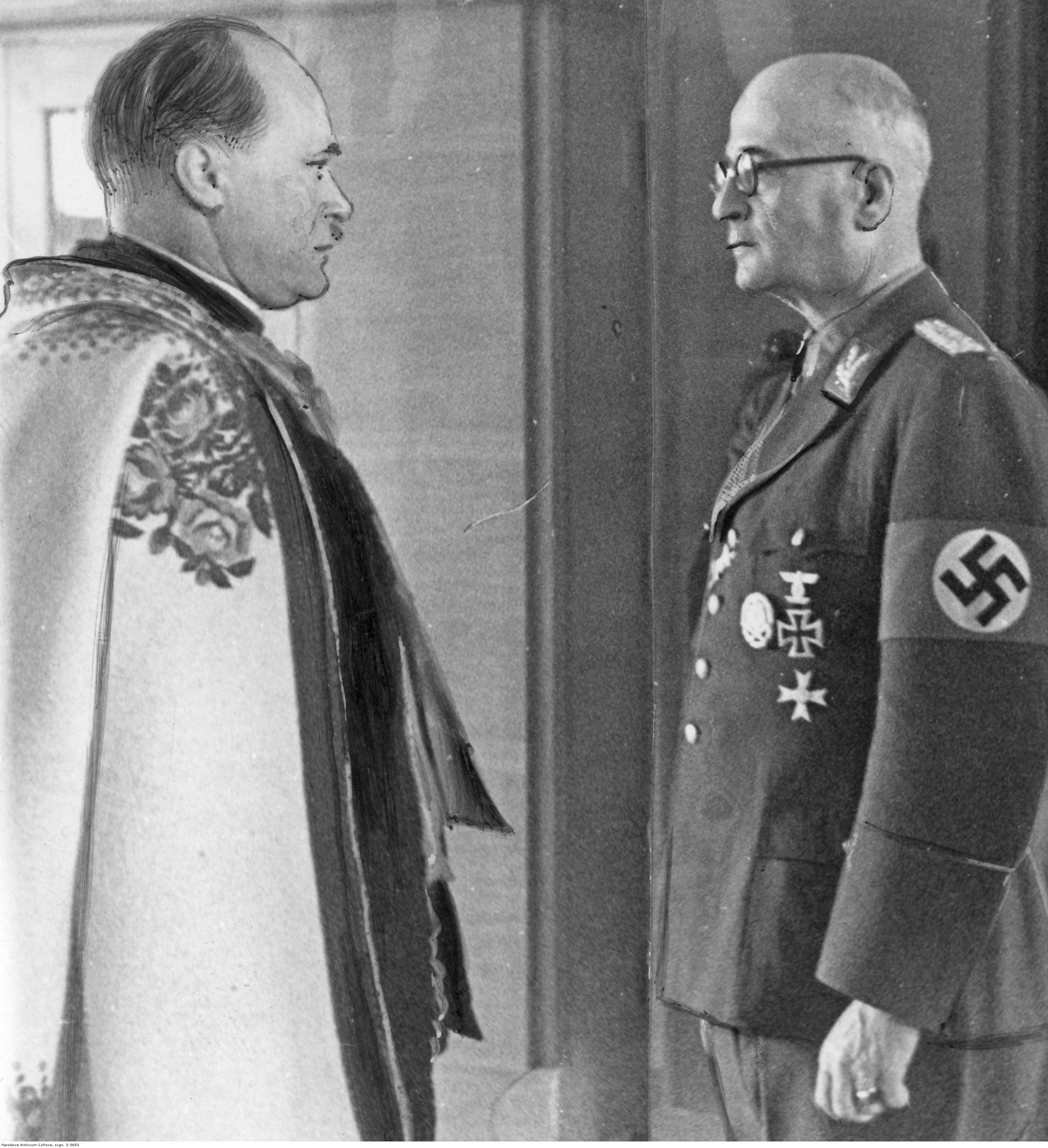 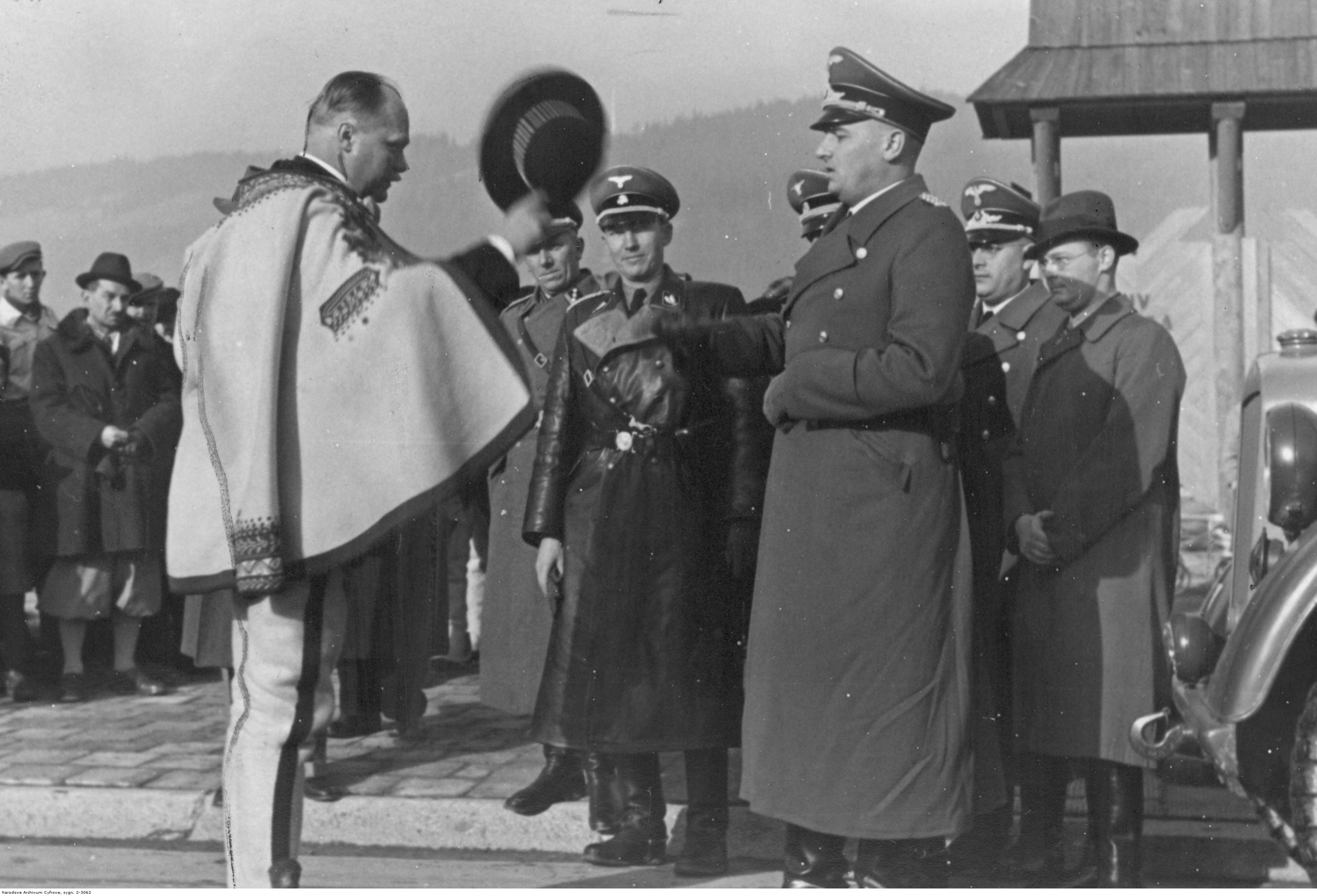   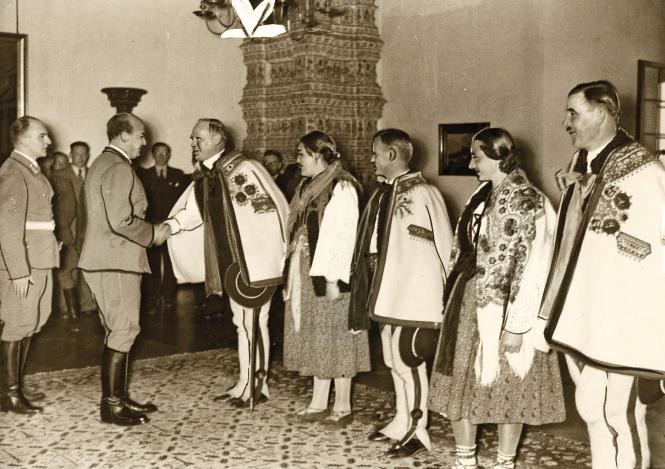 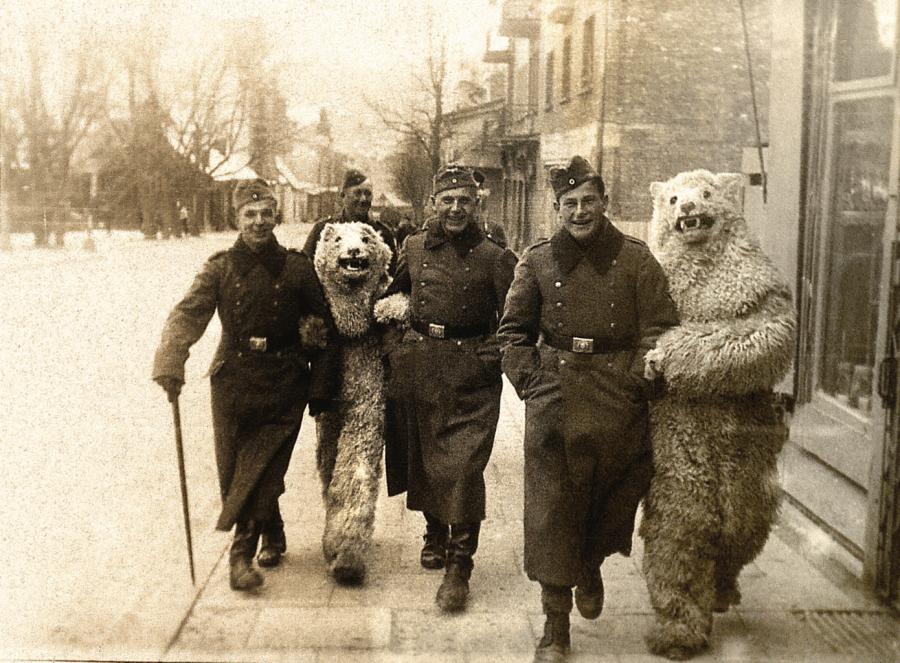  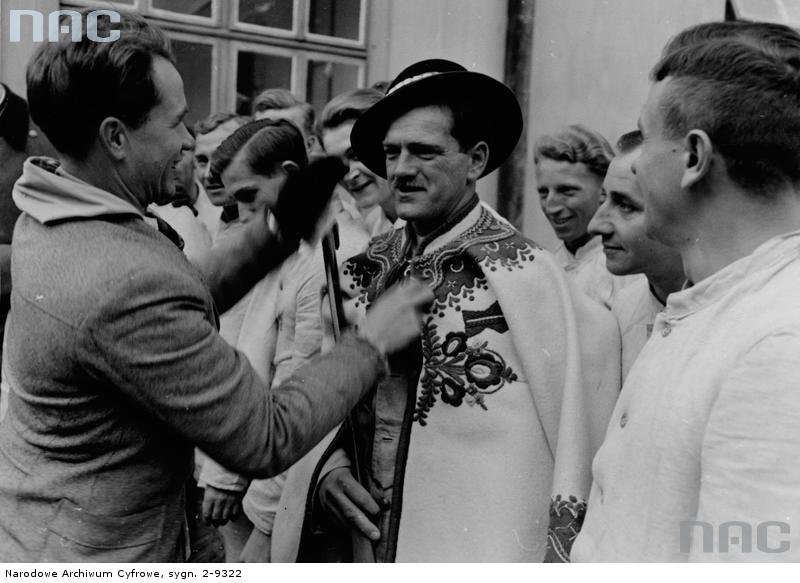  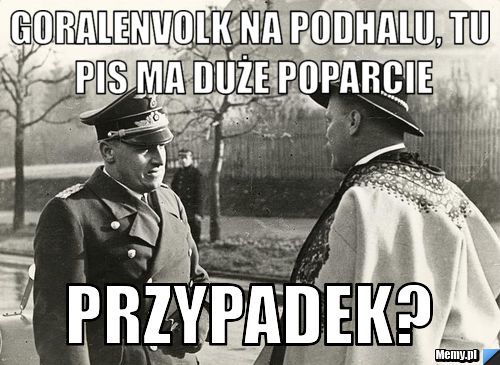    |
|
|
|
Post by Bonobo on Aug 15, 2011 20:59:22 GMT 1
A fascinating conversion at the risk of life. Before the war, Boles³aw Piasecki was a prominent leader of ultra right wing nationalist movement.
In interwar Poland he was one of the more prominent nationalist politicians, playing an important role in the leadership of Obóz Narodowo-Radykalny. In 1934 he was interned in Bereza Kartuska. After his release, he became the leader of the illegal, extreme right faction ONR-Falanga. This organisation advocated "Catholic totalitarianism" and is considered by many to have been a fascist movement.After the war, facing the execution by Soviet NKVD secret police, he joined the communists and became a provocateur whose task was to break the unity of the Polish Church.
After the war, in 1945, he cofounded and directed a so-called social progressive movement of lay Catholics, grouped around the weekly publication "Dzi¶ i Jutro". In 1947 he created the PAX Association and was the chairman of its governing body (until his death). Until 1956, during the period of Stalinism, this organisation was one of the main tools employed by the Communist regime to decrease the influence of the Catholic Church in Poland. It had almost an exclusive right to publish "Catholic" publications. In return, it vocally supported anti-church actions taken by the government. After 1956, the importance of PAX diminished (and Piasecki's role along with it), though it remained a prominent organisation until 1989 and its successors still exist today.He created PAX:
PAX Association (Polish: Stowarzyszenie PAX) mainly pro-communist secular catholic organization, created in 1947 in Poland. At the beginning it worked to undermine grass-roots support for the Roman Catholic Church. Created by Boles³aw Piasecki, it attempted to compete over public issues with the right-wing clergy during the Stalinist era (1945–1956). It took over the Polish branch of Caritas, supported the trial and imprisonment of many Polish clergymen, among them bishop Czes³aw Kaczmarek and cardinal Stefan Wyszyñski. According to Norman Davies PAX was an NKVD front organisation, set up to win Polish Catholics over to communism and to break their links to the Vatican.[1] It maintained a presence in the Sejm, winning for example five seats in the 1969 election.
After 1956, together with many other similar government initiatives, it was toned down and took a more compromising position, in some regards even supporting the anti-communist resistance in Poland, although officially it supported the communist government of the People's Republic of Poland until the fall of communism. After 1982 it was a member of the Patriotic Movement for National Rebirth. Throughout the decades after its creation and the death of Stalin, it continued to steadily lose power and influence, although it still exists in modern Poland.
At all times it was financed by the government as a fake opposition. There were number of collaborators from within the clergy, who were lured by free state benefits, including lavish state pensions (unavailable to clergy otherwise).Quotes from en.wikipedia.org/wiki/PAX_Associationen.wikipedia.org/wiki/Boles%C5%82aw_Piasecki ![]() m.salon24.pl/95e21e95400e54ef5155742a5d991431 m.salon24.pl/95e21e95400e54ef5155742a5d991431,2,0.jpg[/img] prewar Falanga ![]() www.znak.org.pl/graph/pressreview/mainphoto/large/falanga.jpg[/img] www.znak.org.pl/graph/pressreview/mainphoto/large/falanga.jpg[/img]![]() www.legitymizm.org/mlodziez_imperium/MI006/zasoby/gfx/grafiki/onr3.jpg www.legitymizm.org/mlodziez_imperium/MI006/zasoby/gfx/grafiki/onr3.jpg[/img] |
|
|
|
Post by Bonobo on Feb 8, 2017 20:39:04 GMT 1
During Swedish invasion in 17 cent, many Polish and Lithuanian noblemen abandoned the Polish king and adopted the protection of the Swedish one. According to past and today`s standards, they were traitors, even though they had some reasons to act as they did (Polish king`s antagonistic policy).
The most known of them was:
Prince Janusz Radziwiłł, also known as Janusz the Second or Janusz the Younger (Lithuanian: Jonušas Radvila, 2 December 1612 – 31 December 1655) was a noble and magnate in the Polish–Lithuanian Commonwealth. Throughout his life he occupied a number of posts in the state administration, including that of Court Chamberlain of Lithuania (from 1633), Field Hetman of Lithuania (from 1646) and Grand Hetman of Lithuania (from 1654). He was also a voivode of Vilna Voivodeship (from 1653), as well as a starost of Samogitia, Kamieniec, Kazimierz and Sejwy. He was a protector of the Protestant religion in Lithuania and sponsor of many Protestant schools and churches.
In his times he was one of the most powerful people in the Commonwealth, often described as a de facto ruler of the entire Grand Duchy of Lithuania. During the "Deluge", the Swedish invasion of Poland-Lithuania during the Second Northern War, he sided with the Swedish king signing the Treaty of Kėdainiai and the Union of Kėdainiai. This move however antagonised him with most of other nobles, including members of his own family. His forces were eventually defeated in battle and he himself died in a besieged castle at Tykocin.
Union with Sweden and fall from grace
With the war against Russia still ongoing, the Commonwealth suddenly had to face a new enemy. In June 1655 Swedish forces started to advance across the northern territories of the Commonwealth.[26] The Swedish invasion of Polish–Lithuanian Commonwealth, part of the Second Northern War, is known in the Polish history as The Deluge. Together with his cousin Bogusław Radziwiłł, Janusz began talks with Swedish king Charles X Gustav of Sweden, discussing how to reverse the Union of Lublin which created the Commonwealth. Janusz first declared the Grand Duchy a Swedish protectorate in the Treaty of Kėdainiai on 17 August 1655,[27] then the brothers signed another treaty on 20 October according to which the Swedish–Lithuanian union was founded, and in which Radziwiłł's were to rule a part of the Grand Duchy.[28]
Janusz was not alone in abandoning the Polish side; many Polish nobles, such as Deputy Chancellor of the Crown Hieronim Radziejowski and Grand Treasurer of the Crown Bogusław Leszczyński, believing that John II Casimir was a weak king or a Jesuit-king, encouraged Charles Gustav to claim the Polish crown. John II Casimir had few friends among the Polish szlachta, as he openly sympathized with Austria and showed disregard and contempt for the Commonwealth. Poznań Voivode Krzysztof Opaliński surrendered Great Poland to Charles Gustav, and soon other voivodes followed.
Although much of the Commonwealth, including Warsaw, Kraków, and the western portions of the Grand Duchy, were taken by the Swedes,[29] King John II Casimir and his allies were able to regain power after a few years starting with the Jasna Góra resistance and the Tyszowce Confederation. The Swedish defeat and eventual retreat from the territories of the Commonwealth spelled an abrupt end for the plans of Janusz and Bogusław.[28] Janusz died in Tykocin, besieged by loyal Commonwealth forces (desperate Swedish defenders later blew themselves up).
en.wikipedia.org/wiki/Janusz_Radziwi%C5%82%C5%82_(1612%E2%80%931655)A scene from Deluge - Prince declares Lithuanian-Swedish treaty and the army officers rebel. |
|
|
|
Post by Bonobo on Nov 12, 2017 15:34:31 GMT 1
In 1920 Poland was involved in the war with Bolsheviks from revolutionary Russia. Bolshevik armies took the upper hand and managed to enter the Polish territory. A group of Polish communists started to prepare the government for future Soviet Poland. Yes, they were true traitors because they tried to deprive Poles of their newly gained independence. 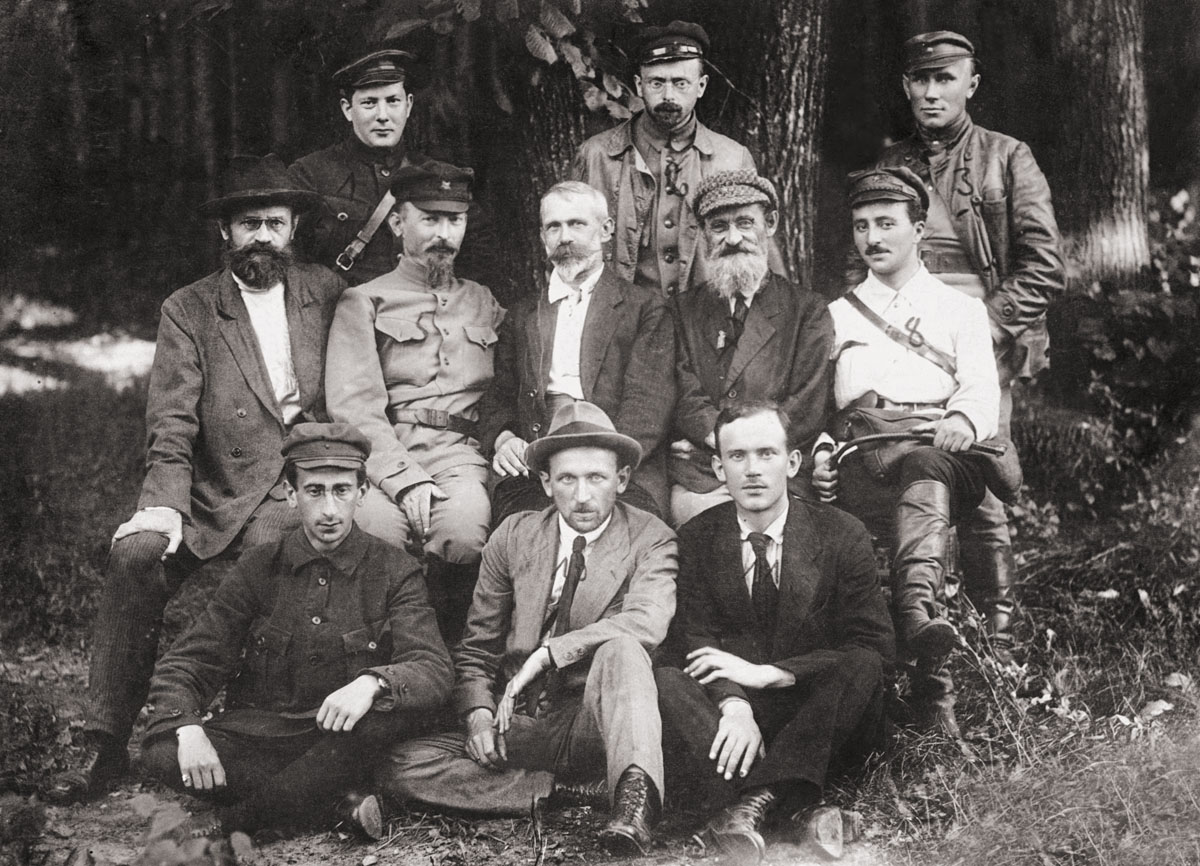 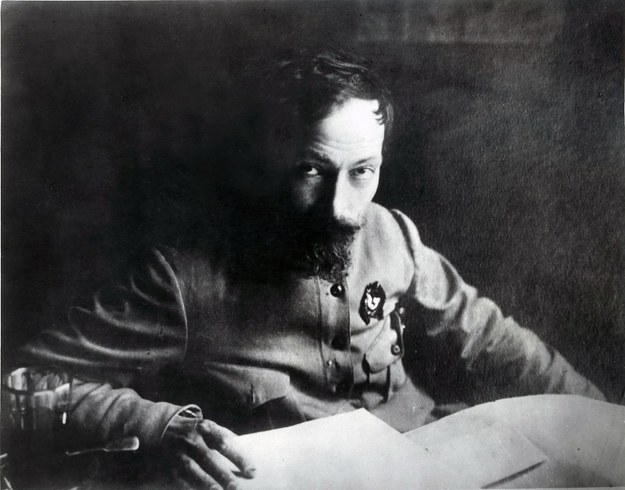    Provisional Polish Revolutionary Committee From Wikipedia, the free encyclopedia Polish Revolutionary Committee Polrewkom 1920 (in center left to right: Feliks Dzierzynski, Julian Marchlewski, Feliks Kon) Agency overview Formed July 23, 1920 Provisional Polish Revolutionary Committee (Polish: Tymczasowy Komitet Rewolucyjny Polski, Polrewkom; Russian: Польревком) (July–August 1920) was a revolutionary committee created under the patronage of Soviet Russia with the goal to establish a Soviet Polish Socialist Republic of Councils (Polish: Sowiecka Polska Socjalistyczna Republika Rad). History Polrevkom was created on July 23, 1920, in Moscow by the "Polish Bureau" of Bolsheviks, with chairman Julian Marchlewski. The decision was made during the initial successes of the Red Army during the Polish-Soviet War with the goal of providing administration of the Polish territories. The Committee was declared "provisional", because it was assumed that after a Soviet victory the power would be transferred to the Polish Communist Workers' Party. The Polrevkom was assembled on July 24 in Smolensk, with its headquarters in an armored train, which quickly proceeded to Minsk (July 25), Wilno (July 27), and arrived to Białystok on July 30, 1920. It set up permanent headquarters in the Branicki Palace and issued public proclamations. For their efforts they received from Moscow over 2 billion rubles.[1] It is seen, like many other Bolshevik revolutionary committees, as a Bolshevik puppet government.[2] The committee consisted of the following members: Julian Baltazar Marchlewski (chairman) Feliks Dzierzynski (de facto leader) Feliks Kon (education) Edward Próchniak (secretary) Józef Unszlicht (party) Bernard Zaks (industry) Stanisław Bobiński (agriculture) Tadeusz Radwański (propaganda) The Polrevkom activity was related to the North-Western front of the Red Army. The South-Western front of the Red Army supported a similar Galician Revolutionary Committee (Galrevkom), seated in Tarnopol in Eastern Galicia. The TKRP had very little support from the ethnic Polish population and recruited its supporters mostly from the ranks of Jews; 1918 Białystok where it was set up had about 75% Jewish majority.[3] On 22 August 1920 the Polrevkom moved out of Białystok to Minsk with the defeat of the Red Army, and was dissolved soon afterwards. A significant number of the key persons involved were later instrumental in creation of the Polish Autonomous District within the Soviet Union. Julian Marchlewski was born in Włocławek into a Polish family. In 1889 he co-founded the Polish Workers' Union. In 1893 he co-founded the Social Democratic Party of the Kingdom of Poland and Lithuania with Rosa Luxemburg. He took part in the Russian Revolution of 1905 in the Polish territories. In 1906, he joined the Bolsheviks. After the failure of the revolution he emigrated to Germany. During World War I, he participated in the German social democratic movement and was a co-founder of its left-wing. He was arrested and later exchanged with Russia for a German spy. In 1919, during the Polish-Soviet War, he took part in the negotiations with Poland. During the Red Army counterattack under Mikhail Tukhachevsky, he headed the Polish Provisional Revolutionary Committee (Tymczasowy Komitet Rewolucyjny Polski) in Białystok in 1920, which planned to declare the Polish Soviet Socialist Republic. He was the first rector of the Communist University of the National Minorities of the West. As an economist, he was an expert in agriculture and took part in the preparation of the Bolshevik program with respect to the peasantry. He published a number of scientific and ideological works. He died near Nervi, Italy in 1925 during a vacation. His daughter Sonja was the second wife of the artist Heinrich Vogeler. In 1926, he was the namesake for the Polish National Raion in Ukraine (Marchlewszczyzna), with the capital at Marchlewsk (known before and after as Dovbysh and Shchorsk). (A similar Polish district of Dzierżyńszczyzna, after Felix Dzerzhinsky was in Belarus). Warsaw's Jan Paweł II Street was formerly called Marchlewski Street.  |
|
|
|
Post by pjotr on Nov 13, 2017 2:16:26 GMT 1
Traitors cause great damage to their nation, by delivering good people to the enemy by betraying them for bloodmoney. They are often opportunists without ethical feelings or awareness. Only motivated by egocentric motivations, greed, ideology, hatred towards the nation and indoctrination, bribes and recruitment by the enemy.
In this video you see the assassination of a Dutch nazi collaborator by the Dutch resistance
|
|
 In 1791 Poles concocted the first constitution in Europe, second in the world after the American one.
In 1791 Poles concocted the first constitution in Europe, second in the world after the American one. 










































